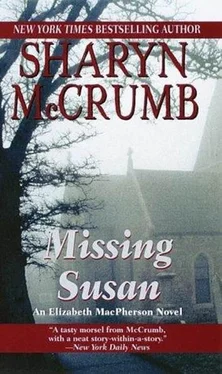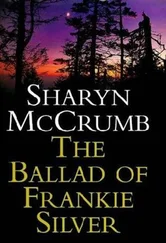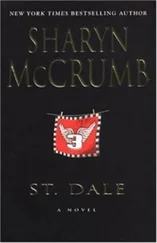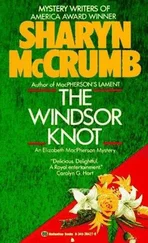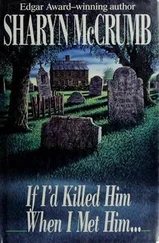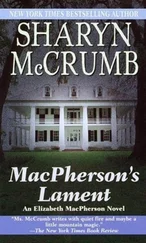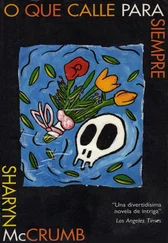Sharyn McCrumb - Missing Susan
Здесь есть возможность читать онлайн «Sharyn McCrumb - Missing Susan» весь текст электронной книги совершенно бесплатно (целиком полную версию без сокращений). В некоторых случаях можно слушать аудио, скачать через торрент в формате fb2 и присутствует краткое содержание. Жанр: Детектив, на английском языке. Описание произведения, (предисловие) а так же отзывы посетителей доступны на портале библиотеки ЛибКат.
- Название:Missing Susan
- Автор:
- Жанр:
- Год:неизвестен
- ISBN:нет данных
- Рейтинг книги:3 / 5. Голосов: 1
-
Избранное:Добавить в избранное
- Отзывы:
-
Ваша оценка:
- 60
- 1
- 2
- 3
- 4
- 5
Missing Susan: краткое содержание, описание и аннотация
Предлагаем к чтению аннотацию, описание, краткое содержание или предисловие (зависит от того, что написал сам автор книги «Missing Susan»). Если вы не нашли необходимую информацию о книге — напишите в комментариях, мы постараемся отыскать её.
Missing Susan — читать онлайн бесплатно полную книгу (весь текст) целиком
Ниже представлен текст книги, разбитый по страницам. Система сохранения места последней прочитанной страницы, позволяет с удобством читать онлайн бесплатно книгу «Missing Susan», без необходимости каждый раз заново искать на чём Вы остановились. Поставьте закладку, и сможете в любой момент перейти на страницу, на которой закончили чтение.
Интервал:
Закладка:
“The False Inspector Dew!” cried Susan, at last able to make a connection between the exhibit and her addiction to crime novels.
Rowan ignored the interruption. “The captain spotted them immediately. Apparently our Ethel wasn’t a very convincing boy. Crippen loved her, though. He pleaded guilty at once and insisted that she knew nothing about the crime. At his execution, he asked that a photograph of her be buried with him.”
“I take a very dim view of burying wives in the basement,” said Alice.
“So did I a couple of marriages ago,” said Rowan. “But I’ve mellowed.”
Meanwhile Kate Conway had found the Whitechapel setting dedicated to Jack the Ripper. She was staring in horror at the blood-caked body of a woman in Victorian dress, sprawled behind an iron railing. “She looks familiar somehow,” Kate murmured. “They never caught the Ripper, did they?”
“No,” said Elizabeth. “But he’d be about a hundred and thirty by now, so I shouldn’t worry. It’s only wax, you know.”
“Who is this?” asked Frances Coles, tapping Elizabeth on the shoulder. “Over here in this little alcove decorated like a bedroom. I wish they’d label these things.”
“I’ll see if I can figure it out,” said Elizabeth. “Show me.”
Frances led her to a dark doorway opening into a tiny candlelit bedroom. There in the shadows, a small child in a white nightshirt sat up in bed, staring wide-eyed at the doorway where the viewers stood. The simple furnishings of the room seemed to date from the previous century. The child was alone in the tableau.
“There aren’t any clues,” murmured Kate, who had followed them over. “I suppose that’s the victim, poor kid. We can’t see the killer, and we don’t even know how it’s going to be killed.”
Elizabeth stood for a long time, as motionless as the wax statue, staring into the eyes of the frightened, dark-haired child. “Smothered,” she whispered, turning away.
“You recognize it?” asked Frances.
She nodded. “Yes. Oh, yes. I see him in my nightmares. It’s Francis Savile Kent of Road Hill House, looking up at Daddy.”
The tour ended a little before five and Rowan sent them off for tea, after making sure that everyone knew when and where they would meet again: seven-thirty that evening, outside the Whitechapel tube station. Tonight they would be given their own private Jack the Ripper walk.
“There wasn’t anything about the Charles Bravo case in Madame Tussaud’s,” Elizabeth complained as they went back into the Underground.
“That’s because the lovely but lethal Florence was acquitted of poisoning him,” Rowan reminded her. “There’ll be no slander in the waxworks, madam. But if you want to pass up half a day of capitalism, I’ll take you out to Balham and show you the Priory, where it happened. You don’t want to run out there now, do you?”
Elizabeth hesitated. “No,” she said at last. “I think there’s something else I’d better attend to.”
“Off you go, then. I’m going back to my boat just now, but I’ll see you all at half past seven.”
Once they boarded the train for the ride back to the hotel, Elizabeth sat down next to Susan Cohen, who had fished a paperback out of her purse and was reading with an intensity that suggested she might orbit the city for hours if no one made her get off at the right stop.
“What made you decide to take this tour?” Elizabeth asked, with a certain satisfaction at interrupting Susan for a change.
“Crime. England. Sounded good,” said Susan, turning a page.
“So you didn’t know Rowan before we started?” She gave a deprecating little laugh. “You’re not his ex-wife or anything?”
When Susan looked up from her book, her face was a study in astonishment. “I’m not anybody’s ex-wife. Why do you ask?”
“Oh, no reason.” She tried a new tack. “Isn’t it a shame that Martha was unable to continue the tour? It must have been a bad fall. I saw her when you helped her into the hotel. Were you with her when it happened?”
“Pretty close,” said Susan. “I spoke to her as we started off the curb-and she said something and went on. I didn’t see her fall, though. We were in a big crowd.”
“Hmm. Was anybody else from the tour there?”
“I didn’t see anybody. Why?”
Elizabeth smiled. “I just wondered. I was thinking about sending a get-well card to Emma Smith and telling her what we’ve been up to since she left. If she has food poisoning, it’s lucky that we all didn’t come down with it. You haven’t been feeling ill, have you?”
“I’m fine. I don’t see how it could have been food poisoning. I was sitting right next to her at the dinner in St. Ives-and we ordered the same thing.”
“Well,” said Elizabeth, “you never know.”
“Is anybody else sick?” She looked around the car for another seat to move to. “You aren’t, are you?”
“I’m fine,” Elizabeth assured her. “Except for that nasty shock I got from the light switch in my room.” Which should have been your room , she finished silently.
Susan went back to reading her book and Elizabeth left her alone. As the train clattered on in the darkness, she stared up at the map of the Underground, lost in thought.
When Elizabeth returned to her hotel, the desk clerk hailed her and informed her that she had a letter. She seized it eagerly, hoping for a message from Cameron, but the stamps were British and the address an unfamiliar one in Yorkshire. When she reached her room, she read the message, at once remembering Rowan’s promise that his friend would answer her question. It said:
Dear Madam:
An old reprobate of my acquaintance, Rowan Rover, has asked me to reply to your question on the fate of Constance Kent, not because he respects my superior skills in scholarship , but because he is too lazy to attend to it personally. However, a small matter of a burned cushion in his aquatic residence impels me to be generous, and I shall now set your mind at rest concerning the matter of the tragic young lady from Rode. I assume that if you have studied the case in enough detail to be concerned about her fate, you have surmised her innocence.
At her trial Constance Kent was condemned to death for her crime, but popular sympathy (perhaps people were not without their suspicions) persuaded Her Majesty’s Government to commute the sentence to life imprisonment. Constance served twenty years of this sentence, which would still leave her just under forty, and by all accounts she was a model prisoner, serving first in the prison laundry and later in the infirmary. Interestingly enough, her father died in 1872 while she was still in prison, but still she did not recant her confession. In for a penny, in for a pound, I suppose. Or perhaps she doubted that anyone would believe her. Of course, he left no deathbed confession to free her, the selfish old trout!
For news of her whereabouts after her release from Fulham Prison in 1885, I rely on Bernard Taylor’s account in his 1979 book Cruelly Murdered. He maintains that Constance changed her name to Ruth Emilie Kaye (Emilie was her middle name) and emigrated to Australia. She served as a nurse from 1890 until 1932, later founding a nurses’ home. When she died in 1944, she was one hundred years old. I believe she is the only convicted murderer ever to receive the congratulatory birthday telegram from the monarch.
I hope this has set your mind at rest. Please give my regards to R.R. and tell him that I am always happy to be of service in his little schemes, in return for a berth on his Love Boat. It is less painful than agreeing with his Ripper theories.
Читать дальшеИнтервал:
Закладка:
Похожие книги на «Missing Susan»
Представляем Вашему вниманию похожие книги на «Missing Susan» списком для выбора. Мы отобрали схожую по названию и смыслу литературу в надежде предоставить читателям больше вариантов отыскать новые, интересные, ещё непрочитанные произведения.
Обсуждение, отзывы о книге «Missing Susan» и просто собственные мнения читателей. Оставьте ваши комментарии, напишите, что Вы думаете о произведении, его смысле или главных героях. Укажите что конкретно понравилось, а что нет, и почему Вы так считаете.
